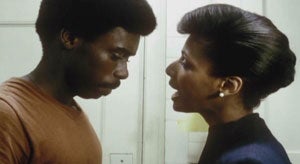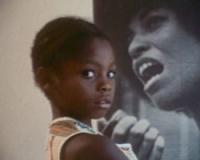While most “director’s cuts” tend to feature added material, Charles Burnett’s director’s cut of My Brother’s Wedding is actually shorter than its theatrical cut. According to the UCLA archive, when Milestone acquired the rights to the film in 2007, Burnett cut 30 minutes from the theatrical version. While a non-trivial amount to remove from what was originally only a 115-minute film, much of the cut material has seemingly little effect on the narrative. Certain scenes were shortened: the “Amazing Grace” opening, Pierce and Soldier’s race down the sidewalk, dinner at the Dubois’s house, etc. Burnett additionally cut many transition shots of crowds walking through South Central Los Angeles and other city tableaus, with seemingly few consequences to the film.

Two cuts, however, effectively change the entire film. The first extends Wendell and Sonia’s visit to the Mundy’s at the beginning of the film. Here, Sonia is introduced as prim, cold, and shallow: she is seated at the table in a suit, playing with a flower petal. She asks Pierce to get her a glass of water “without putting [his] finger in it.” Sonia then forces Pierce to hold the glass while she files her nails. Finally, she touches her lips quickly to the glass, hands it back to Pierce, and returns to her nails. The second cut is the only complete scene removed from the theatrical version, as far as this author can tell. This short scene shows Wendell and Sonia in a starkly-lit room laughing and telling Black jokes to Pierce, who leaves the room in exasperation.
These scenes paint a harsh picture of the middle class and, moreover, justify Pierce’s rejection of Sonia and his own upwardly-mobile brother. They also remove the sting from Sonia’s outburst at Pierce’s demand to move the wedding so he can attend Soldier’s funeral. In other words, they reinforce Pierce as the hero of the film.
This, however, misconstrues Burnett’s meanings for the film. Pierce is the protagonist in the sense that the film is primarily through his point of view, but he is decidedly not the hero. Though a “good boy” who has never been in jail or caused trouble, he is nonetheless a 30-year-old man who lives at home, is having an affair with a married woman, and begrudgingly works for his parents. Moreover, Pierce is passive, a lost soul unmotivated to change his suffering. According to Wendell, Pierce has “a romanticized view of the have-nots,” which is his tragic flaw: He has given into the valorization of Black suffering.1 One of the lessons of My Brother’s Wedding is that poverty does not automatically make one wiser/stronger/better. (Neither does money, but that is fodder for another post.) This point becomes lost by including those two scenes that justify Pierce’s hatred of the middle class.
Burnett’s editing decisions are particularly interesting in light of his professed motives for making My Brother’s Wedding. According to Burnett’s account as recorded in an oral history conducted for the L.A. Rebellion project, the initial idea for My Brother’s Wedding came from the filmmaker’s own life: he was once caught in a situation in which he had to attend a funeral and a wedding that were to take place at the same time. Despite borrowing this plot point from his own life, however, Burnett maintains that the film is not autobiographical. Rather, he notes that his intention in making My Brother’s Wedding was to deal with the “perverted notion of being working class poor and staying working class poor” that he had seen in his community growing up. As the film’s protagonist, Pierce embodies this attitude toward the middle class, which Burnett further describes as looking down upon a desire to be smart and educated. But Burnett is also critical of this “perverted notion,” which lends some insight as to his decision to later cut/cut down the scenes described above, both of which are explicitly antagonistic to the middle class values portrayed by Wendell and Sonia.
Ultimately, Burnett hoped to reach a broader audience with My Brother’s Wedding than he had with his earlier feature, Killer of Sheep (1977), which is now included in the National Film Registry. According to Burnett, the earlier film’s documentary elements and neorealist style were off-putting to some, so he strove for the more traditionally entertaining—and frequently quite funny—tone of My Brother’s Wedding. And that tone clearly comes through no matter which cut you’re watching.
1. For more on how American media, particularly melodramas, have sanctified Black suffering, see: Linda Williams, "Playing the Race Card: Melodramas of Black and White from Uncle Tom to O.J. Simpson" (Princeton, NJ: Princeton University Press, 2001).
—Jenni Fong Govea & Alice Royer






 Mobile Navigation
Mobile Navigation


Comments